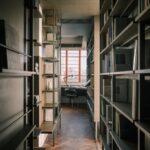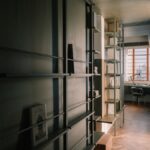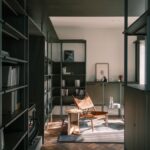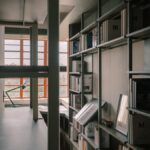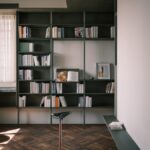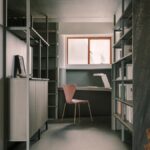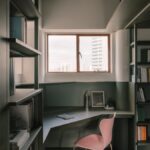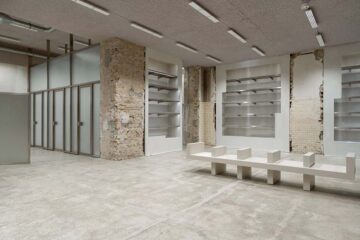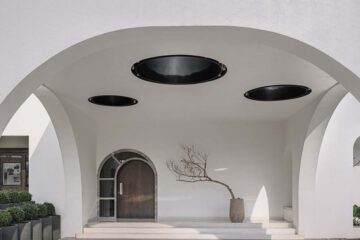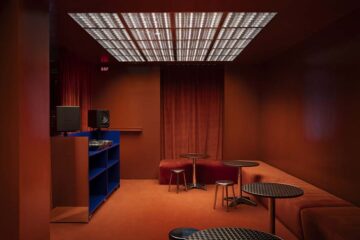Redefining Domestic Interior Design: Magy Upper Apartment Renovation

In the heart of Shanghai, atelier tao+c embarked on a unique interior design project in the historic Magy Apartment, originally built in 1936 on Wulumuqi Road. The client sought a comfortable and poised interior for their small studio on the upper floor, envisioning a space where one could feel at ease even during confinement. The architects undertook this project amidst the city’s lockdown from March to May 2022.

Embracing Solitude and Seclusion
atelier tao+c recognized the significance of solitude and the rented nature of the space as fundamental aspects of their design approach. Unlike residences that often reflect the identity and status of homeowners, a rented room offers freedom from such burdens, allowing the focus to shift solely to functionality and inhabitation. Drawing inspiration from the spatial organization of a monk’s cell, which transcends social bonds, the architects aimed to design a private room that liberates its inhabitants from conventional notions of family life.
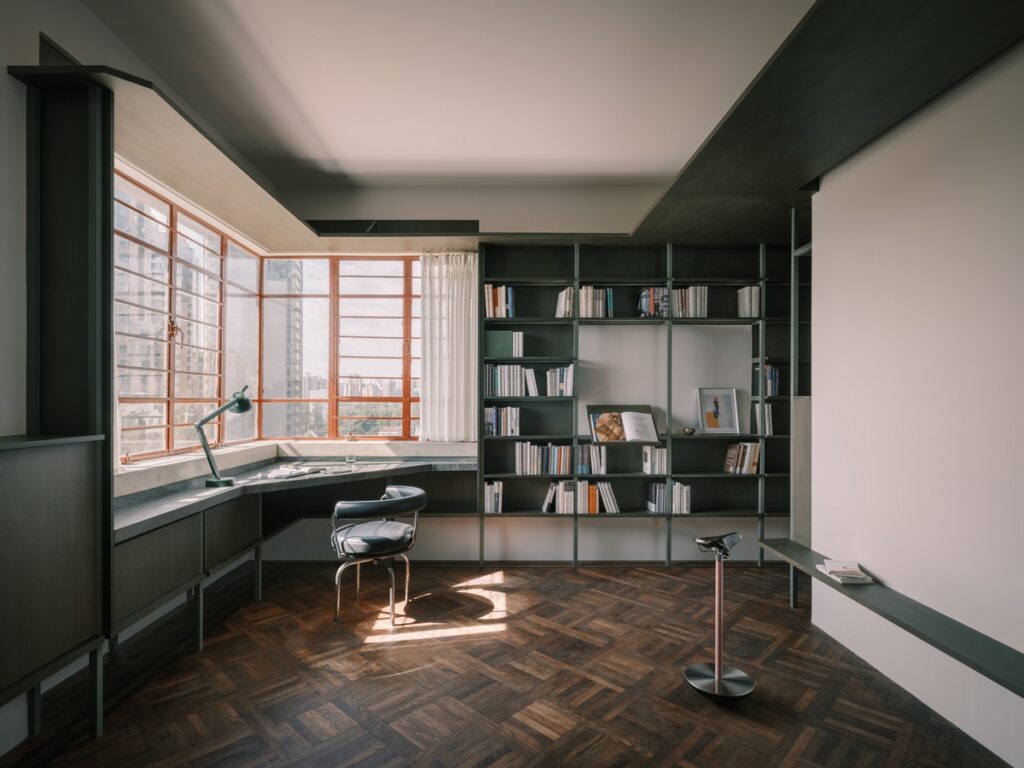
Innovative Spatial Solutions
The renovation retained the original bathroom and kitchen while demolishing the bedroom partition to create an open space. Inserting a new “cupboard” system, the architects delineated distinct areas for living, sleeping, and dining, each independent yet seamlessly connected. Utilizing green-resistant MDF boards, various elements within the system were transformed into multifunctional objects such as bookshelves, desks, beds, and closets, preserving familiarity while introducing functionality.
Minimalistic Approach to Conservation
To minimize damage to the existing room and preserve the original teakwood floor, most components were prefabricated in a factory and assembled on-site. Thin steel holders lifted the cupboards without touching the floors, ensuring lightness and independence while maintaining a sense of integration with the original space. This delicate balance between stability and fragility contributed to a unique spatial experience.
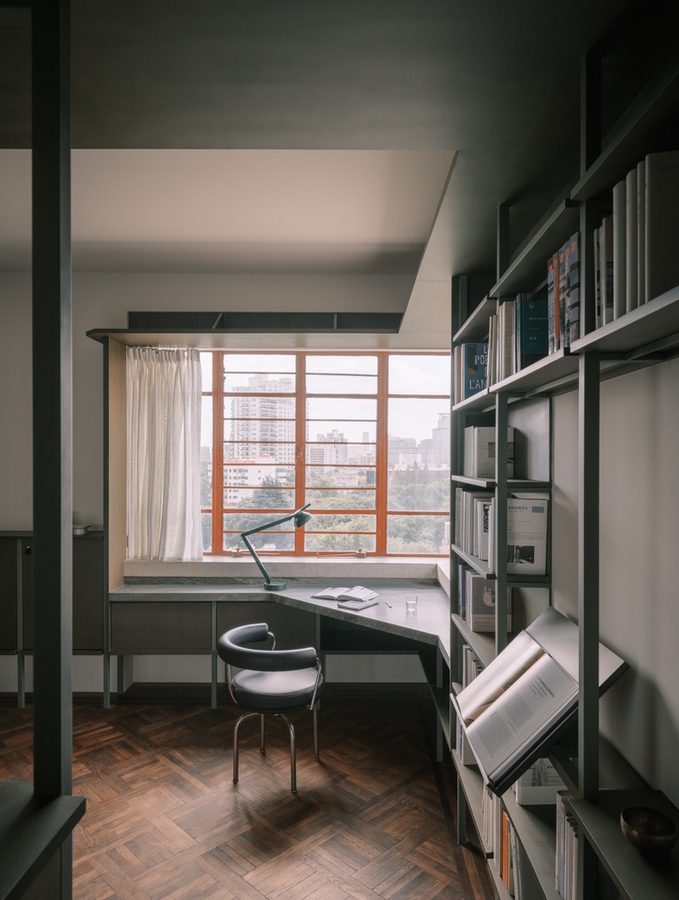
Integration of Public and Private Realms
The design strategically positioned desks by windows to offer views of the urban landscape while maintaining a sense of privacy. The compressed corridor, flanked by bookshelves, leads to a spacious terrace, echoing Karel Teige’s concept of a minimum dwelling connected to public facilities. Situated in a vibrant neighborhood with easy access to collective facilities, the studio blurs the boundaries between public and private realms, inviting contemplation on solitude within the context of urban life.
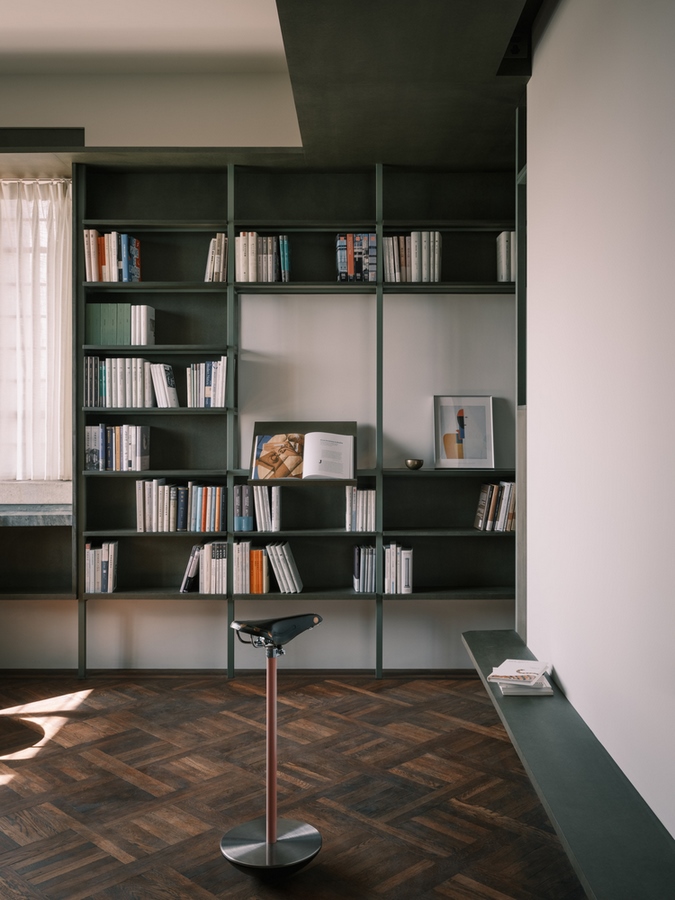
Conclusion
atelier tao+c’s renovation of the Magy Upper Apartment exemplifies a thoughtful approach to domestic interior design, emphasizing functionality, solitude, and integration with the surrounding urban fabric. By reimagining the studio as a sanctuary within the metropolis, the architects have created a space that fosters tranquility and contemplation while offering a connection to the vibrant energy of Shanghai’s city life.


